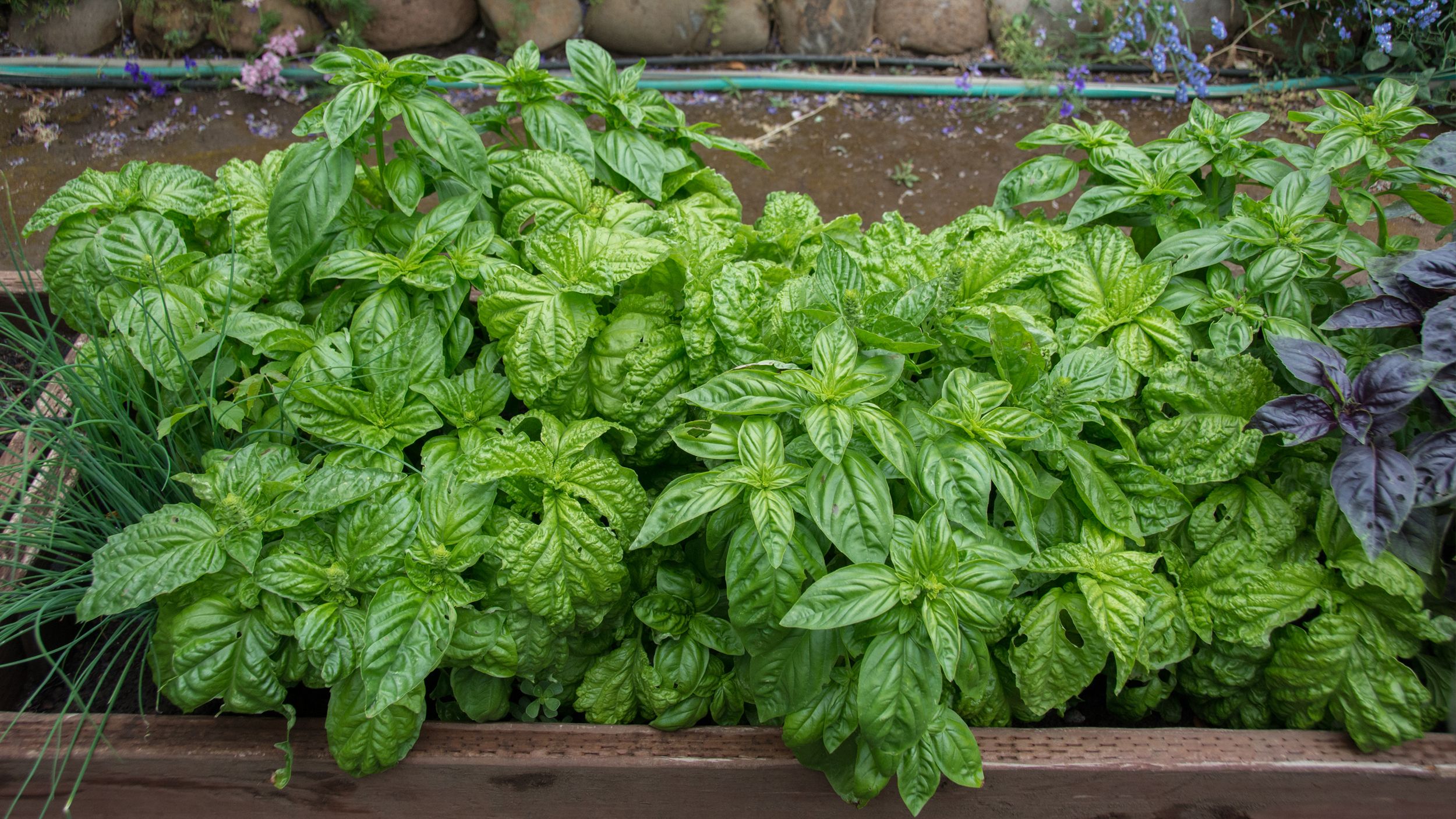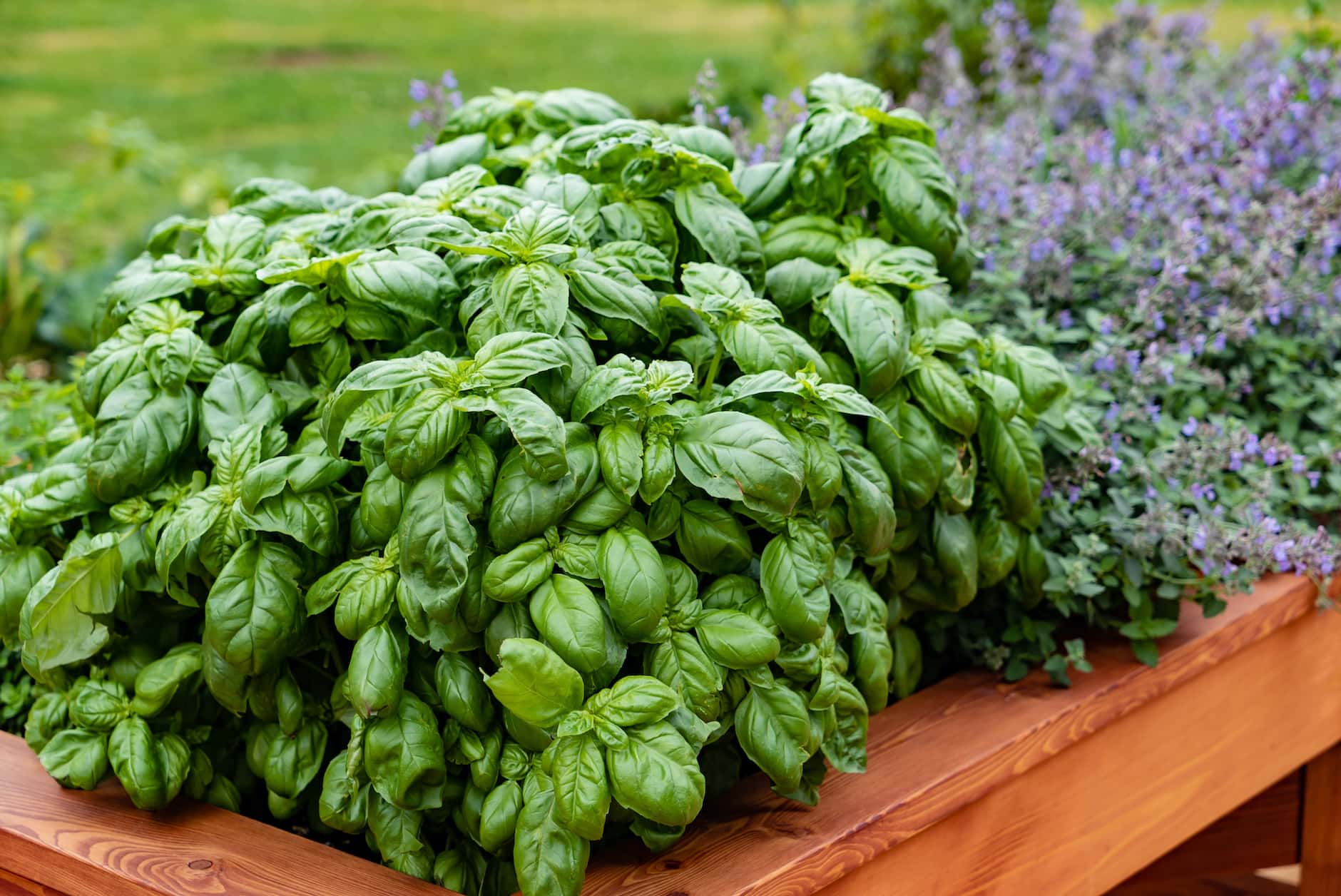Basil Growing Made Easy: Practical Solutions for a Thriving Herb Garden

The Basil Master Class: From First Sprout to Flavor-Filled Harvests
Ask any passionate home cook or gardener which herb they couldn’t live without, and most will hesitate for a moment—then quietly admit, “It’s basil.” Not because it’s trendy, but because there’s a profound satisfaction in clipping your own emerald-tipped sprig, still warm from the sun or fragrant from a rain. Yet every year, at least half of new growers watch their seedlings stretch into spindly disappointment or wilt just shy of harvest.

I’ve stood in those shoes—and watched seasoned gardeners grimace after another summer of yellow leaves or bland flavor. So here is the full master class: the complete arc from beginner uncertainty to expert confidence; not theory, but tested systems, surprising lessons learned the hard way, and pro-level breakthroughs that set your basil apart.
No platitudes. Just practical solutions, real numbers, and stories you won’t find on the back of a seed packet.
BASIL FOUNDATIONS—LEVEL 1: GET YOUR ROOTS RIGHT
If you’re picturing basil as an “easy” herb for beginners—pause right there. That idea nearly derailed my first seasons; I treated basil like chives (forgiving and forgettable) instead of what it is: a sunshine-chasing plant with very specific needs.
Meet Your Match: Varieties That Matter
Think of basil like bikes—not all models fit every rider or route:
- Genovese is classic: big-leafed and fast-growing (perfect for first-timers).
- Thai (Siam Queen) tolerates higher heat and humidity but sulks if crowded.
- Lemon/Lime thrive in dappled outdoor sunlight but flop under weak windowsill light.
- Purple Ruffles/Dark Opal are showy yet less robust—a beauty contest winner if you baby them.
Master's insight: When starting out and success is king, always choose Genovese or Lettuce Leaf for reliability. By year two, branch out!
What Basil Needs—But You’ll Miss Without Experience
- Sun: 6+ hours direct sun isn’t optional; less = leggy disappointment.
- Soil: Rich and well-draining—think fluffy compost more than heavy garden dirt.
- Water: Moisture matters…but letting roots sit wet will kill plants faster than neglect.
- Temperature: Expect die-back if soil drops below 60°F (16°C)—so don’t gamble on an early start outdoors!
- Airflow: Pinching makes plants bushy above ground while root health (drainage) keeps disease away below.
My early blunder? Starting seeds on a kitchen shelf where sun reached just two hours daily in April—I grew pale “ghost basil” twice before learning light isn’t negotiable.
If you’re growing basil outdoors and want to make sure your location and conditions are optimal, check out Growing Basil Outdoors: Choosing the Right Location and Climate.
LEVEL 2: FROM SEEDS TO STREET SMART – THE REAL STARTUP PHASE
Forget what seed packet timelines say; here’s how real-world timing plays out:
Indoor Sowing Hack
- Start seeds no sooner than six weeks before your area’s last frost—any earlier means stressed transplants by midseason.
- Use shallow trays with pre-moistened seed starting mix (do not use garden soil—it compacts too quickly indoors).
- Scatter seeds thinly; cover lightly with vermiculite—not more than 1/8 inch.
- Mist lightly twice per day until germination.
Fast Track Mistake:
My attempt at turbocharging germination by putting trays directly above a radiator? Too much bottom heat roasted half my batch—the survivors “helmet-headed” under stuck shells! Temperature sweet spot is 70–75°F (21–24°C), no higher.
Expert Twist: Slip trays inside clear plastic bags during sprouting for maximum humidity—but vent daily to prevent mold.

If you want a step-by-step guide to starting basil seeds under optimal conditions, see How to Start Basil from Seeds Indoors.
Direct Sowing Wisdom
Only sow outdoors once nighttime temps are steady above 55°F (13°C) and the ten-day forecast shows zero frost risk. Anything earlier stunts growth permanently—you can’t fix it later.
LEVEL 3: THE TRANSPLANT GAME – MOVING WITHOUT SHOCK
Seedlings with two sets of true leaves are ready to move up in life:
- Gently leverage them out (plastic fork works better than fingers).
- Transplant into peat pots or solo cups until they fill out their root balls.
- Harden off by placing outside for three hours on day one—and adding one hour daily over five days before planting out.
Temperature Checkpoint:
If soil temperature measures under 60°F—even if air is warm—wait! A ten-dollar digital probe saves weeks of heartache here.
Plant spacing isn’t mere suggestion—it defines airflow and reduces mildew risk:
- Large varieties: 12 inches apart
- Smaller types (Spicy Globe): 6 inches does the trick
Mix slow-release granular organic fertilizer (e.g., Espoma Garden-Tone) into each planting hole for stronger starts.
For more on what makes the best soil and fertilizer for basil, including specific product recommendations, see Best Soil and Fertilizer for Growing Healthy Basil.
LEVEL 4: DAILY CARE RITUALS THAT BUILD RESILIENCE
After years of tweaking weekly routines across gardens small and large, here’s what consistently delivers lush harvests:
Watering Discipline
Water when the top inch dries out—not according to calendar dates or weather apps! Container basil will demand water almost daily in high summer; raised beds may need it twice weekly depending on mulch depth and size of plants.
Tactile test: Soil should feel cool but free-draining around roots when probed with an index finger in morning light—evenings can give false readings due to cooling/dew formation.
If you’re struggling with watering routines or want to avoid root rot, don’t miss Watering Basil: Tips for Optimal Growth and Avoiding Root Rot.

Mulching Secrets
A thin ring of shredded leaf mold around base helps regulate moisture swings—but mulch must never touch stems directly or fungal trouble brews fast after rainfall!
Feeding Upgrades
Every four weeks, dilute fish emulsion to half-strength (“if it smells like the docks at low tide—you got it right”) and pour gently over soil line rather than drenching foliage.
LEVEL 5: HARVEST TECHNIQUES & LONGEVITY TRICKS
The Pinching Principle Explained Visually:
Picture this conversation with my old mentor (“Big Jim”), who ran a backyard nursery:
“Don’t just pluck leaves! See these pairs?”
He points at two fresh leaves halfway up a wild stalk.
“Pinch stem above them”—he snaps tender growth off with thumb-and-nail click—“Every snip splits energy two ways instead of one.”
By midsummer I had salad bowl–shaped bushes instead of single lonely columns going nowhere!
Leaving flower spikes means flavor decline within days—they steal energy from foliage production faster than seemed possible when I watched mine bolt during a freak June hot spell (+95°F).
Harvest rhythm: Once plants hit six inches tall, pinch every week regardless if using leaves immediately; never let tops grow uninterrupted more than ten days midsummer unless prepping for seed saving experiments!
If you want more visual guides and a full breakdown of pruning and picking for best taste and yields, check out Pruning and Harvesting Basil for Maximum Flavor and Yield.
LEVEL 6: UNEXPECTED CHALLENGES AND FLEXIBLE FIXES
Even advanced growers face curveballs each season—the secret is pre-emption over panic-reacting:
Leggy Seedlings
Always caused by chasing light—or overcrowding trays! Install adjustable LED panels over starts indoors ($35 setup changes everything). Any seedling bending sideways = move light closer (~2" above tops).
Yellow Leaves & Root Rot
Overwatering kills more basil than drought ever could. If you see yellow droopiness:
- Unpot plant gently.
- Smell roots—they should be earthy, not sour/stagnant.
- Repot only healthy sections into drier mix; trim rotten roots away fast!
Lost an entire flat of lemon basil to plugged drainage holes last July—a $15 mistake fixed by switching all indoor pots to mesh-bottom nursery cell flats above cookie sheets rather than saucers holding runoff water!

Pest Patrol Hacks
Aphids rarely target robust outdoor plants spaced well—but get creative indoors:
Spray soapy water solution (1 tsp Castile soap/quart) weekly as preventive film during spring/summer peaks—or try sticky traps beside windowsills as early warning system before populations bloom unseen under leaf undersides!
Powdery mildew strikes in high humidity paired with crowding—solve instantly by removing interior stems/leaves each month (“thinning the jungle”) especially after heavy rains.
For more on identifying and managing the most common basil pests and diseases, see Common Basil Pests and Diseases and How to Manage Them.
LEVEL 7+: ADVANCED STRATEGIES FOR BASIL MASTERY
Here’s where professionals separate themselves from hobbyists:
Successive Sowing Cycle
Don’t panic-replant—all staggered sowings three weeks apart keep fresh cuttings available even if one batch bolts suddenly mid-summer heatwave.
E.g., Start March indoors > transplant May > sow again late May > repeat July for autumn cut microgreens window harvests under lights through October/November!
Cost breakdown:
- Seeds per season (<$4)
- Seed starting mix (<$10 for several flats)
- Grow lamp electricity: $0.50/month per tray
Yield? Three clippings/week from five plants covers salads/pesto needs June-November entirely via succession alone!
Cloning Army Method
Snip non-flowering four-inch tips whenever pruning—place ten at once in pint glass water jar near south window (“roots visible inside five days!”). Plant rooted clones directly into final pots two weeks later—a replacement army always ready post-storm/freak accident/slug invasion without further investment.
Flavors Worth Experimenting For
Mini-trick from Europe tours circa summer ‘22—weekly misting mature plants lightly with diluted seaweed extract doubled oil content detected via side-by-side kitchen taste tests vs controls (“pesto tasted punchier... chef commented unprompted!”).
GOING BEYOND THE ORDINARY — CASE STUDIES OF NOTABLE WINS AND DISASTERS
“Show me someone who hasn’t lost half their first crop—and I’ll show you someone who’s lying.”
The difference between average and exceptional growers comes down to troubleshooting gumption…

Case #1 — The Reluctant Apartment Gardener Turned Basil Convert
When Anna started growing Thai basil next to her Brooklyn radiators, her windowsill space hardly offered six hours’ sun even during peak June daylight ("felt like setting up camp three floors underground").
First Result: Stunted growth both years running…until she invested $40 into full-spectrum LEDs suspended just overhead using removable Command hooks ("basil went jungle-thick by August—I’ve never eaten so many summer rolls").
Key Learning: Natural sun limitations aren’t negotiable indoors…but artificial lighting is.
Case #2 — Compost-Powered Monster Patch Disaster Avoided
Jake loaded his raised bed with layers upon layers of kitchen scraps turned fine black gold through winter prep (“the best-smelling compost ever”). Planted direct-sown Genovese mid-May…
Midseason Glory: Bushes topped knee height by July—
Unexpected Outcome: Powdery mildew swept through after three thunderstorms dropped four inches rain in twelve days; cured only after slicing out whole middle section plus boosting airflow by spacing new sowings double-wide (“lost maybe half my yield but saved next batch completely”).
Case #3 — Container Queen Overcomes Water Wars
Priya tried growing purple ruffles + Greek columnar varieties pot-to-pot on her south deck rail ("Boston gets weirdly hot then cold snaps”). First time she watered morning/evening religiously until surface moss built up…then rain flooded everything pell-mell over July fourth weekend while she was away.
Fix? Ditch saucer-catchers beneath pots + swapped to coarse pine bark mulch atop substrate so excess drained faster—with bonus side effect that containers never overheated even when local temps hit record highs.
TROUBLESHOOTING TABLE – INSTANT DIAGNOSIS FOR EVERY STAGE
| Symptom | Likely Culprit | Pro Problem-Solver Fix |
|---|---|---|
| Drooping midday/week | Under/overwatering | Dig finger deep—adjust schedule not guesswork |
| Blackened stem base | Root rot/fungal attack | Uproot/cut loss/remove all infected debris |
| Tiny spots/yellow veining | Aphid/mite infestation | Targeted sprays + increase quick ventilation |
| Pale new growth | Nitrogen deficiency | Dose worm castings/fish emulsion immediately |
| Stalled/no growth | Compacted soil/low nutrients | Aerate regularly/add granular organics |
Smartest move often isn’t action but observation—the pattern tells stories isolated moments won’t show.
YOUR PRACTICAL MASTER PLAN — CHECKLIST FROM NOVICE TO VETERAN
To ensure nothing slips through cracks:
-
Identify location/light intensity before anything else
- South-facing window? Supplement needed?
- Patio/garden bed? Hours tracked week-to-week?
-
Choose robust variety per climate + preferred use case
- Genovese = pizzas/pestos/raw eating
- Lemon/Lime = teas/dressings
- Thai = stir-fries/spicy cuisine
-
Sow seeds smart—or select healthy seedlings locally grown
- Indoors w/grow lights optimal Jan-April north climates
- Outdoors post-frost only
-
Transplant only after hardening off gradually
-
Upgrade pots/mulch/drainage as plant matures through season
-
Pinch/prune every week above leaf pairs (“No uncut stems!”)
-
Deep-drink watering discipline over guessing games
-
Monthly feeding routine tailored to pot size/proximity rain events
-
Monitor closely during rapid weather shifts/humidity surges
-
Harvest rhythmically—and propagate cuttings continually
11+. Never stop experimenting!
- Try new flavors/techniques yearly
- Swap best tricks locally (“what worked this dry June?”)
- Document yields/failures – improvement compounds rapidly
EVOLVING AS A BASIL GROWER — BEYOND JUST PLANTS
Here’s what separates passable results from legendary ones:
You don’t simply grow basil—you learn alongside each cycle, adapting methods as microclimates change room-to-room or bed-to-bed across seasons.
Annual review questions I run each September:
- Did any patch outperform others? Why?
- Were pests/disease clustered geographically/seasonally?
- Which propagation method delivered more reliable new starts?
Keep an annotated logbook—a simple spiral-bound pad does wonders versus memory alone—increasing year-over-year yields dramatically existed once those micro-lessons were tracked religiously.
And remember…
The greatest joy arrives not with perfect rows—but that everyday ritual where crushed green leaves stain your thumb just before dinner rush; when unexpected scent explodes as tomato juice mingles with home-grown spice; when failed attempts morph into next year’s triumphs shared proudly at community potlucks or family tables.
Basil mastery doesn’t reside in luck—it lives within practiced awareness fueled by curiosity…and knowing exactly how to fix things when nature throws yet another curveball your way!
Bookmark this playbook—and welcome fully into your own progression from cautious beginner to trusted neighborhood authority on all things green-leafed and fragrant.
Ready? Step outside—or reach toward that sunny windowsill—and start your most satisfying growing season yet!



